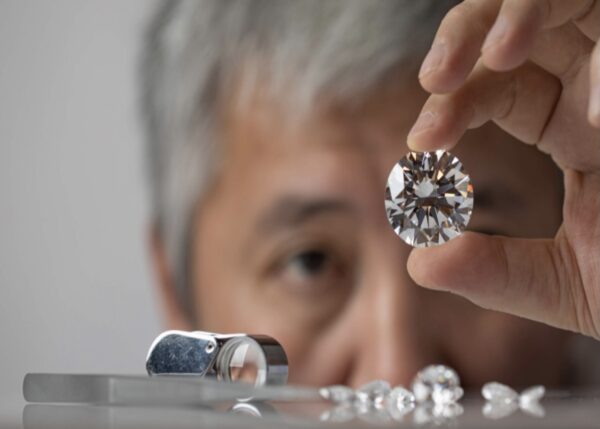
These are the Best Lab-Grown Diamonds
If you’re considering purchasing a diamond, you may be wondering if lab-grown diamonds are a good option. In this article, we’ll discuss the pros and cons of lab-grown diamonds so that you can make an informed decision.

Introducing the idea of lab-grown diamonds and why they are a good alternative to mined diamonds
Lab-grown diamonds have become a popular choice in recent years, as they offer a similar appearance and value to mined diamonds but with an array of benefits. Lab-grown diamonds can be created in any colour, size or shape, with lower costs and less environmental destruction than mined diamonds. In addition, lab-grown diamonds offer peace of mind that the site of origin has not been linked to unethical practices or civil conflicts. Thanks to modern science, so many items that were once only available through traditional extraction or cultivation methods can now be reproduced responsibly in laboratories – and it’s time we consider the potential of lab-grown diamonds instead of relying on mined rocks from the Earth.
Hera is at the forefront of this exciting shift towards sustainable luxury, exclusively working with lab-grown diamonds in their engagement rings and fine jewelry. By choosing a lab grown diamond from Hera, you’re not only selecting a stunning gemstone of exceptional quality but also supporting a brand committed to ethical practices and environmental responsibility. Hera’s dedication to lab-grown stones ensures that every piece of jewelry is both beautiful and conscientious, reflecting a modern approach to timeless elegance.
How lab-grown diamonds are made, from start to finish
Lab-grown diamonds are made with the same chemical properties of natural diamonds, crafted through advanced technology in a fraction of the time. Production begins by using a man-made diamond seed and subjecting it to extreme pressure and temperature conditions similar to that of Earth’s mantle. The carbon atoms form into crystalline structures around the seed and are then transferred to a metal substrate where more layers are created. The thermal transfer technology continues this layering process until the desired size is achieved, turning the precursor material into a stunning rough diamond grown in a lab setting. Next, tooling equipment polishes this diamond as if it had been mined, resulting in an exquisite cut ready for wear in your favourite jewels, watches or everyday accessories.
The benefits of choosing a lab-grown diamond over a mined diamond
Choosing a lab-grown diamond over a mined diamond is an excellent choice for those interested in eco-friendly, affordable jewellery with the same stunning shine and brilliance. Lab-grown diamonds are chemically and optically identical to mined diamonds but use significantly fewer resources. Whether you’re looking for lab grown diamond earrings or other jewellery pieces, these diamonds allow you to enjoy beautiful and sparkly accessories without supporting unethical or unsafe mining practices. Additionally, these diamonds are typically 30% less expensive than their mined counterparts, allowing them to make an even bigger statement. Whether you’re looking for a piece of jewellery that’s easy on your wallet or the planet, shopping for lab-grown diamonds is an excellent option.
The price of lab-grown diamonds to mined diamonds compared
Lab-grown diamonds are a relatively new technology that looks every bit as stunning and dazzling as its mined counterpart, all at an accessible price point. Although the cost of a lab-grown diamond is typically 25-40% lower than a mined diamond, they contain the exact same chemical and physical properties. This makes them an attractive alternative to those who want to capture the beauty of the traditional gem without breaking their wallet. With each passing year, lab-grown diamonds become more accessible, thanks to advances in technology and consumer demand for more sustainable options.
Tips on how to care for a lab-grown diamond
If you’re lucky enough to own a lab-grown diamond, congratulations! The longevity of your gemstone is key, so it’s important to take the proper precautions in caring for it. For starters, keep your diamond away from any harsh chemicals as they may damage its exterior. Also, avoid exposure to very high temperatures as this could cause it to fracture or shatter. Another tip is to avoid wearing this delicate jewel while engaging in any strenuous activity like swimming or exercising as everyday environmental debris can quickly degrade the quality of the stone over time. Ultimately, with careful attention and an occasional thorough professional cleaning from a trusted jeweller- you’ll be able to enjoy your diamonds’ beauty for many years to come!
The pros and cons of choosing a lab-grown diamond
Lab-grown diamonds are becoming an increasingly popular choice for engaging couples. On the positive side, these diamonds are nearly identical to mined diamonds in terms of cut, clarity, colour and carat weight but may be up to 40% cheaper than comparable mined diamonds. Additionally, lab-grown diamonds are a more ethical and eco-friendly choice as they do not require destructive mining. On the other hand, lab-grown engagement rings still can carry certain social dynamics that may not be accepted by your peers. Moreover, their resale value is far lower than mined diamond jewellery due to their lack of rarity and perceived status value. Therefore, it is important to carefully consider the pros and cons when weighing your diamond purchasing options.
In conclusion
Lab-grown diamonds are a great alternative to mined diamonds. They are eco-friendly, conflict-free and cost 30% less than mined diamonds. While they require the same care as any other diamond, they offer many benefits that make them a desirable choice for engagement rings and fine jewellery.














































